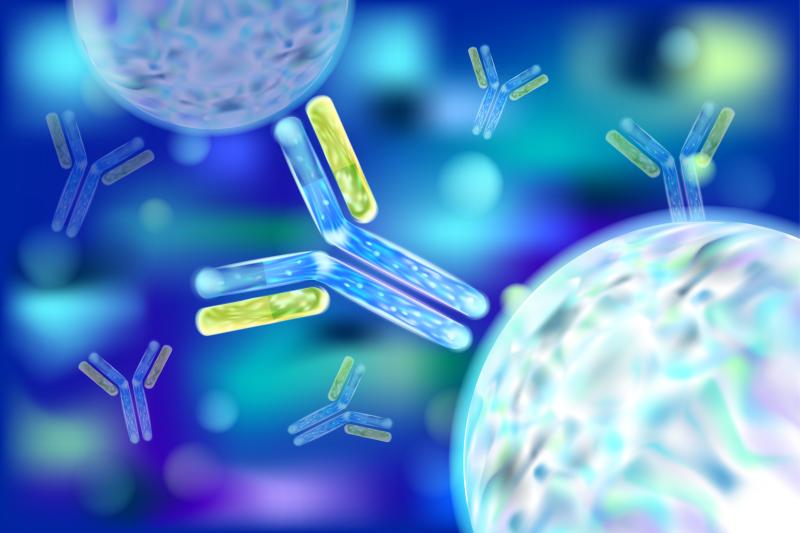
Immunoglobulin (Ig)M and IgG antibodies against SARS-CoV-2 can be detected in the middle and later stages of coronavirus disease 2019 (COVID-19), and an enzyme-linked immunosorbent assay (ELISA)-based antibody test demonstrates high specificity in the diagnosis of the infection, as reported in a study.
The human antibody response, which is crucial for the clearance of initial infection, serves a powerful diagnostic tool, according to researchers. Compared with real-time polymerase chain reaction (RT-PCR) assays, antibody screening tests yield rapid results, are less expensive, easy-to-use and accessible to staff without laboratory training.
Therefore, antibody detection may be a valuable complement to viral nucleic acid assays in the diagnosis of COVID-19, they added.
In the study, the researchers recruited 85 confirmed COVID-19 patients, 24 patients with suspected infection and 60 healthy controls. Serum samples from patients were collected at different time points (3–40 days after symptom onset) and tested for anti–SARS-CoV-2 IgM and IgG using ELISA.
The seroconversion of specific IgM and IgG antibodies in the confirmed group was observed as early as day 4 after symptom onset. IgM seropositivity increased gradually and notably, while IgG peaked on day 12. Results of serum samples obtained in the control group showed that only three individuals were positive for IgG, while all were negative for IgM. [Clin Infect Dis 2020;doi:10.1093/cid/ciaa461]
Of note, a rapid increase was seen in cumulative seroconversion rates for IgM and IgG at days 9 and 11, respectively. Nearly all patients whose serum samples were collected on day ≥30 of illness were seropositive for both antibodies (IgM: 12/14; IgG: 14/14).
Relative to RT-PCR, IgM had a sensitivity of 77.3 percent (51/66), specificity of 100 percent, positive predictive value (PPV) of 100 percent, negative predictive value (NPV) of 80.0 percent and consistency rate of 88.1 percent for diagnosing COVID-19 in the confirmed patient group. The corresponding estimates for IgG were 83.3 percent (55/66), 95.0 percent, 94.8 percent, 83.8 percent and 88.9 percent.
In the suspected patient group, IgM achieved a sensitivity of 87.5 percent (21/24), specificity of 100 percent, PPV of 100 percent, NPV of 95.2 percent and consistency rate of 96.4 percent. IgG had 70.8 percent (17/24), 96.6 percent, 85.0 percent, 89.1 percent and 88.1 percent, respectively.
IgM antibodies against SARS-CoV-2 are usually produced earlier than IgG, but in the current investigation, both antibodies have been detected as early as the fourth day after symptom onset. This antibody generation seems to happen quickly than in severe acute respiratory syndrome, another coronavirus-caused disease, the researchers noted. [N Engl J Med 2003;384:1953-1966]
They pointed out that the specificity and PPV of IgM antibody indicate that it can be used as a good tool for diagnosing COVID-19. However, the sensitivity, NPV and consistency rate mean that acute infection may still be missed based on seronegative IgM. Meanwhile, the specificity, NPV and consistency rate of IgG show that a diagnosis may be established based on seropositive IgG.
According to the researchers, patients with early seronegative antibodies should be undergo retesting at day 10 of illness to avoid misdiagnosis.
Taken together, the findings show that ELISA-based detection of antibodies against SARS-CoV-2 is a valid approach for serodiagnosis of COVID-19, they added. “As an emerging infectious disease, the current population is generally susceptible to it, and the background levels of serum-specific antibodies are low.”